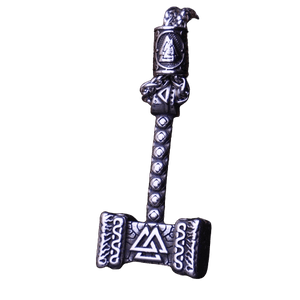Epona: The Celtic Goddess of Fertility and Protection
- min of reading
Summary :

Nordic Wolf Celtic Ring
£26.55

Wolf Head Necklace
£26.55

Celtic Entwined Ring
£30.15

Celtic Triskel Bracelet
£26.55
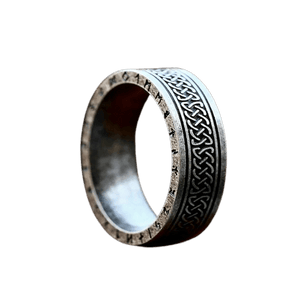
Viking Rune Ring
£30.15
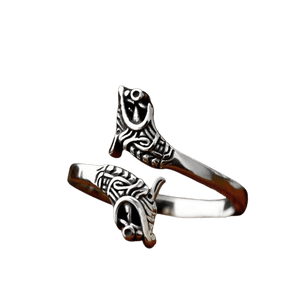
Celtic Wolf Ring
£26.55
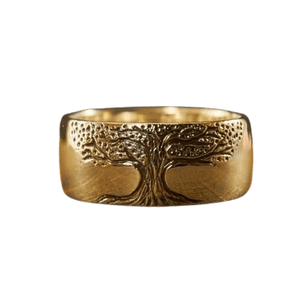
Tree of Life Ring
£26.55
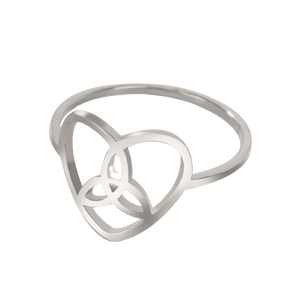
Trique Heart Ring
£26.55
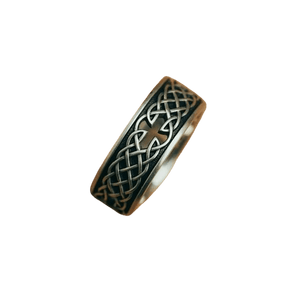
Celtic Ring
£26.55
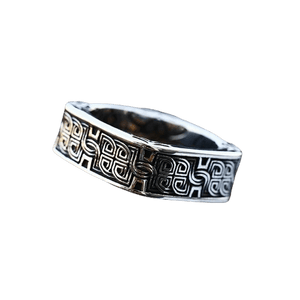
Celtic Ring
£26.55

Claddagh and Triskel Ring
£26.55
Discover the power of Epona, the Celtic goddess of fertility and protection. In Celtic mythology, Epona is revered for her fertility powers and ability to protect animals and humans. Her name means "the great mare" in the Celtic language, reinforcing her strong connection to horses, symbols of strength and freedom.
The cult of Epona was widespread throughout Gaul (ancient France) and spread across borders to other Celtic regions. As a fertility goddess, she was often associated with bountiful harvests, prosperity, and the fecundity of animals.
But Epona was more than just a fertility goddess. She was also a protector of travelers, bestowing her benevolence on those who traveled on horseback. The Celts offered her prayers and sacrifices to ensure their safety on their journeys.
In this article, delve into the mystical world of Epona and discover her lasting influences on Celtic culture. Explore her divine attributes, artistic representations, and role in the daily lives of the Celts. Be prepared to be captivated by the power and grace of this powerful Celtic goddess.
Click on the link or image below to view our Nordic Wolf Ring

Introduction to Epona and her importance in Celtic mythology
Epona is one of the most important deities in Celtic mythology. She is often depicted as a woman of dazzling beauty, riding a majestic horse. Her name, which means "the great mare", emphasizes her close connection with horses and nature.
According to legend, Epona was born from the union of a god and a mare. She was considered the mother of all horses and was revered for her ability to bring fertility and protection to these animals so dear to the Celts.
The Celts saw horses as sacred creatures, symbols of strength, freedom and power. They believed that horses were messengers of the gods and could guide the souls of the deceased to the afterlife.
This deep belief in the power of horses contributed to Epona's importance in Celtic mythology. The Celts considered her a benevolent goddess, capable of protecting horses and promoting the fertility of agricultural lands.
Epona was also revered as a protector of travelers. The Celts believed that she could ensure their safety when traveling, especially when traveling on horseback. They offered prayers and sacrifices to her to gain her goodwill and protection.
The origins and history of Epona
The exact origins of Epona remain uncertain, but she was widely worshipped by the Celts in the region of Gaul. Her cult spread to other Celtic regions, including Britain, Ireland, and Spain.
The cult of Epona is thought to date back to pre-Roman times, but it reached its peak during the Roman occupation of Gaul. The Romans, who also had a great reverence for horses, adopted Epona into their own pantheon.
Archaeological evidence for the veneration of Epona is abundant. Statues and bas-reliefs depicting the goddess have been discovered throughout Gaul and other Celtic regions. These artistic representations show Epona riding a horse, sometimes holding a foal in her arms.
These archaeological finds attest to the importance of Epona in the daily life of the Celts. She was venerated in sanctuaries, temples and altars, and people made offerings to her to obtain her protection and favor.
Click this link or the image below to see our Triskel necklace
Epona's role as goddess of fertility and protection
Epona was primarily worshipped as a fertility goddess. The Celts believed that she could bring abundance and prosperity to the agricultural lands, ensuring bountiful harvests. They offered prayers and sacrifices to her to obtain her blessing and protection.
Horses, being considered sacred creatures, were also under the protection of Epona. The Celts believed that she could guide the souls of deceased horses to the spirit world, ensuring their safe passage.
As a protective goddess, Epona was often invoked by travelers. The Celts believed that she could protect them from the dangers of the road, especially when traveling on horseback. They offered her prayers and sacrifices to gain her goodwill and protection during their travels.
Fertility and protection were two essential aspects of Celtic life, and Epona embodied these qualities with grace and power. Her benevolent presence brought hope, security and prosperity to those who worshipped her.
Symbols and representations associated with Epona
Symbols associated with Epona highlight her close connection with horses and fertility. One of the most common symbols is the depiction of Epona riding a horse, sometimes holding a foal in her arms.
Horses themselves were also considered symbols of Epona. The Celts believed that horses were messengers of the goddess, able to convey their prayers and offerings.
Snakes were also associated with Epona, symbolizing fertility and regeneration. The Celts believed that snakes were sacred creatures, capable of bringing prosperity and fertility to farmlands.
Offerings to Epona often included fruits, grains, and flowers, symbolizing the fertility of the land. The Celts believed that these offerings were accepted by the goddess and allowed her to promote the fertility of the agricultural land.
Click this link or the image below to view our Celtic Knotwork Ring
Epona in art and literature throughout history
Epona has been widely depicted in Celtic art and literature throughout history. Statues and bas-reliefs depicting the goddess riding a horse are among the most common finds.
These artistic representations highlight Epona's grace and power, as well as her love for horses. They demonstrate the importance of the goddess in the daily lives of the Celts and their deep reverence for horses.
Epona was also mentioned in many Celtic texts, such as sagas and epic poems. These texts often describe the goddess as a benevolent protector, able to bring fertility and protection to those who worship her.
Epona's presence in Celtic art and literature is a testament to her popularity and influence in Celtic culture. Her power and grace continue to inspire and captivate people around the world.
Modern Interpretations and the Cult of Epona
Although Epona's cult declined with the demise of Celtic civilization, the goddess continues to inspire and fascinate many people today. Her connection to horses and nature makes her an iconic figure for nature lovers and followers of Celtic traditions.
Some people still perform rituals and ceremonies in honor of Epona today. These practices are intended to reconnect with ancient Celtic traditions and to honor the goddess as a protector and spiritual guide.
Epona has also become a popular figure in modern popular culture. She is often depicted in books, films, and video games, where she embodies power, beauty, and wisdom.
Click on this link or on the image below to see our tree of life ring
Rituals and practices in honor of Epona
Rituals and practices in honor of Epona vary according to individual traditions and beliefs. Some followers of Celtic traditions celebrate annual festivals dedicated to the goddess, where they offer offerings and prayers to her.
Other practices include meditation and visualization to connect with Epona's energy, as well as the use of symbols and amulets representing the goddess. Some practitioners also work with horses, using their energy and power to connect with the goddess.
It is important to note that these practices are personal and can vary from person to person. What matters is the intention and respect for the goddess and her power.
Epona's Enduring Legacy in Modern Culture
Epona's legacy in modern culture is evident in many aspects of our daily lives. Horses continue to be revered and loved by many people, a testament to the goddess's enduring influence.
Additionally, artistic depictions of Epona continue to inspire contemporary artists, who capture her power and grace in their works. Writers also continue to draw on Epona's mythology to create captivating stories and inspiring characters.
By exploring Epona’s legacy, we can reconnect with the wisdom and power of nature. We can honor fertility and protection, while celebrating the beauty and power of horses.
Resources for Further Exploration of Epona and Celtic MythologyIf you're interested in learning more about Epona and Celtic mythology, here are some recommended resources:
- Books: "Epona: Celtic Goddess of Fertility and Protection" by Miranda Green, "Celtic Mythology" by Proinsias Mac Cana.
- Museums and exhibits: Visit local museums or Celtic art exhibits to see artifacts and depictions of Epona.
Remember to explore these resources with curiosity and open-mindedness, embracing the richness of Celtic mythology and the wisdom of Epona.
Conclusion: Harnessing the Power and Wisdom of Epona
As we discover the power of Epona, we delve into a world rich in symbolism and spirituality. As a goddess of fertility and protection, she continues to inspire and captivate people around the world.
Epona’s power and grace are a reminder of the strength of nature and the deep connection between humans and animals. By honoring Epona, we can connect with our own intuitive nature and find the wisdom and guidance we need.
Whether you are fascinated by Celtic mythology or simply curious to learn more about Epona, take the time to explore this powerful and benevolent goddess. Her enduring legacy continues to illuminate our modern world and remind us of the beauty and

